|
|
Кацусика Хокусай. Тридцать шесть видов Фудзи: № 44. Озеро Сувако в провинции Синано冨嶽三十六景 信州諏訪湖Lake Suwa in Shinano Province (Shinshū Suwako), from the series Thirty-six Views of Mount Fuji (Fugaku sanjūrokkei)Artist: Katsushika Hokusai (1760–1849)Period: Edo period (1615–1868)Date: ca. 1831–32
The thatched roof of the Japanese shrine echoes the twin-peaked shape of Fuji's summit. This analogizing of form, a common technique in Hokusai's visual vocabulary, serves to set up a visual and symbolic dialogue between the sacred mountain and the religious shrine. (The Metropolitan Museum of Art)
A view across a lake toward Mt. Fuji, here printed in all blue inks (a type of print called aizuri-e or "blue picture"). This image exists in full color elsewhere. In his 1991 catalogue on Hokusai, Matthi Forrer writes of this print, " Beneath two pines, a thatched hut stands on a promontory above Lake Suwa in present-day Nagano Prefecture. Mount Fuji can be seen in the distance behind Takashima Castle, which belonged to the Suwa daimyo, or feudal lord. Except for some mist on the horizon, it is a clear day with a sheer blue sky. On the lake, one of the fisherman in the boat is hauling in a large net. Here Hokusai has created a sense of depth in what is otherwise a traditional Japanese landscape by placing the pine trees and hut conspicuoulsy in the foreground. Other than this, apart from printing some areas in a darker tone, little has been done to suggest distance. Only three shades of blue have, in fact, been used. As in all later impressions of the designs originally issued in an aizuri-e edition, various colours were subsequently introduced. Mount Fuji and the trees in the foreground and on the more distant hills were printed in shades of green, with yellow used for the timber walls of the hut and for the branches of some trees, while the sky was printed in blue at the top and in an orange-red below, thus setting the scene in the early evening. In still later impressions the blue outlines were replaced by a black line-block." (Brooklyn Museum)
Lake Suwa, a body of water about 3 miles long and 2 ½ miles wide, lies in the Suwa basin, about 120 miles west of Edo, in Shinano province (present-day Nagano prefecture). Around the edge of the lake, there developed towns including Kami Suwa and Shimo Suwa (Upper and Lower Suwa, respectively). Kami Suwa prospered as a town connected with an ancient castle that was once occupied by the famous warrior Takeda Shingen. Rebuilt in 1590, it was reinstated as a holding of the Suwa daimyö family by the shogunate. The district of Suwa was also located where two major highways converged – the Köshü and the Kiso road. The latter (also called the Nakasendö Road) ran through the mountainous regions and connected Edo and Kyoto. In this scene, the lake is viewed from a high position somewhere along the shore. The only recognizable landmark here is Takashima Castle, seen left of center and just below Mount Fuji, at the tip of the cape filled with houses. This must comprise the village of Shimo Suwa. Today the castle is located inland; it is presumed that the waters of Lake Suwa have receded since Hokusai’s time. In the center foreground two trees, which rise to the edge of the print, stand before a house or a shrine. It is said that the mountain is so far from the lake that it can be seen only on a fine day. The reddened sky indicates it is morning; the water in the distance is getting lighter blue, reflecting the sun. Shades of blue, except for the pink sky and the brown house, dominate the picture. The key-block was printed in blue. (The Asian Art Museum of San Francisco, HOKUSAI AND HIROSHIGE – Great Japanese Prints from the James A. Michener Collection, Honolulu Academy of Arts: The Asian Art Museum of San Francisco, 1998 Page 71. Cat. 22)
This is an early impression printed entirely in imported Prussian blue, a genre called aizuri-e (blue-printed pictures) in Japanese. Although this monochromatic color scheme was the artist’s and publisher’s original intent, later editions of the print added tan (for the small shrine in the foreground), green (for the vegetation and the lower part of Mount Fuji), and a pale reddish hue in the sky to indicate an early morning scene. While the novelty of aizuri-e appealed to Edoites when the pigment first became commonly available in the 1820s, by the time Hokusai’s Thirty-six Views of Mount Fuji began to be reprinted it seems already to have fallen out of fashion. Lake Suwa is about 120 miles west of Edo, in Shinano Province (present-day Nagano Prefecture). On the left side of the print, directly under Mount Fuji, Takashima Castle stands on a promontory jutting out into the lake. Behind it, nestled in the trees, are the rooftops of Lower Suwa village, one of two main villages that developed around the lake. “Hokusai’s Summit: Thirty-six Views of Mount Fuji” (09/24/2009-01/06/2010)
Озеро Сувако в провинции Синано
Озеро Сувако находится далеко от Фудзи, но, вопреки ожиданиям, отсюда открывается хороший вид на гору. На гравюрах с изображением этого озера часто рисовали вид на Фудзи. Например, «Вид на озеро Суваноко» (серия «36 видов Фудзи»), автор Андо Хиросигэ; «Вид на озеро Суваноко в провинции Сиодзиритогэ. Дорога Кисокайдо», художник Кэйсан Эйсэй. Хокусай также использовал этот мотив в гравюре «На льду озера Суваноко в провинции Синсю». Однако среди всех этих произведений данная гравюра — самая значительная. По гармонии цвета она вся наполнена синевой озера, бледная поверхность воды передает бесконечный простор. Небо, окрасившись на закате сине-красными оттенками, покрывает вершину горы. Такую тихую гармонию неба и воды как бы нарушает высокий холм на переднем плане, поросший деревьями. На его вершине — небольшое святилище, установленное в честь божества этого озера. Очертания крыши святилища перекликаются с абрисом Фудзи и невольно проецируют наш взгляд в глубину розово-голубых далей, туда, где возвышается гора. Здесь явственно проявляется любовь Хокусая к сопоставлению форм, к композиционному и цветовому повтору. Сравнивая форму крыши святилища с Фудзи, художник воплощает идею гармонии и совершенства природы. Гравюру отличает очень тонкое колористическое решение.
Katsushika Hokusai. Lake Suwa in Shinano Province, from the series Thirty-six Views of Mount Fuji
Все 46 гравюр серии «Тридцать шесть видов Фудзи» | Thirty-six Views of Mount Fuji | 富嶽三十六景 | Fugaku Sanjūrokkei
31 января 2024, 23:07
0 комментариев
|
Партнёры
|

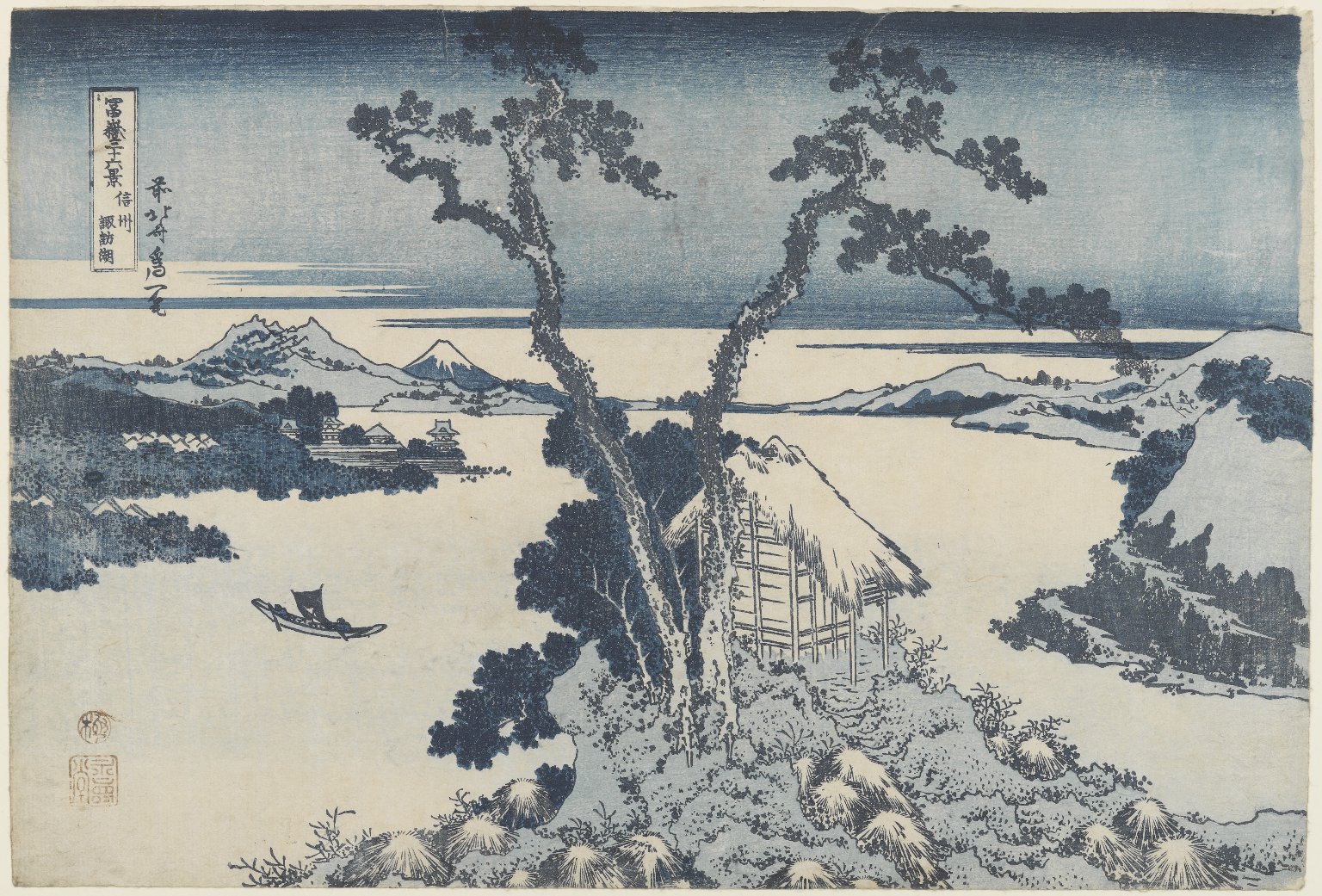
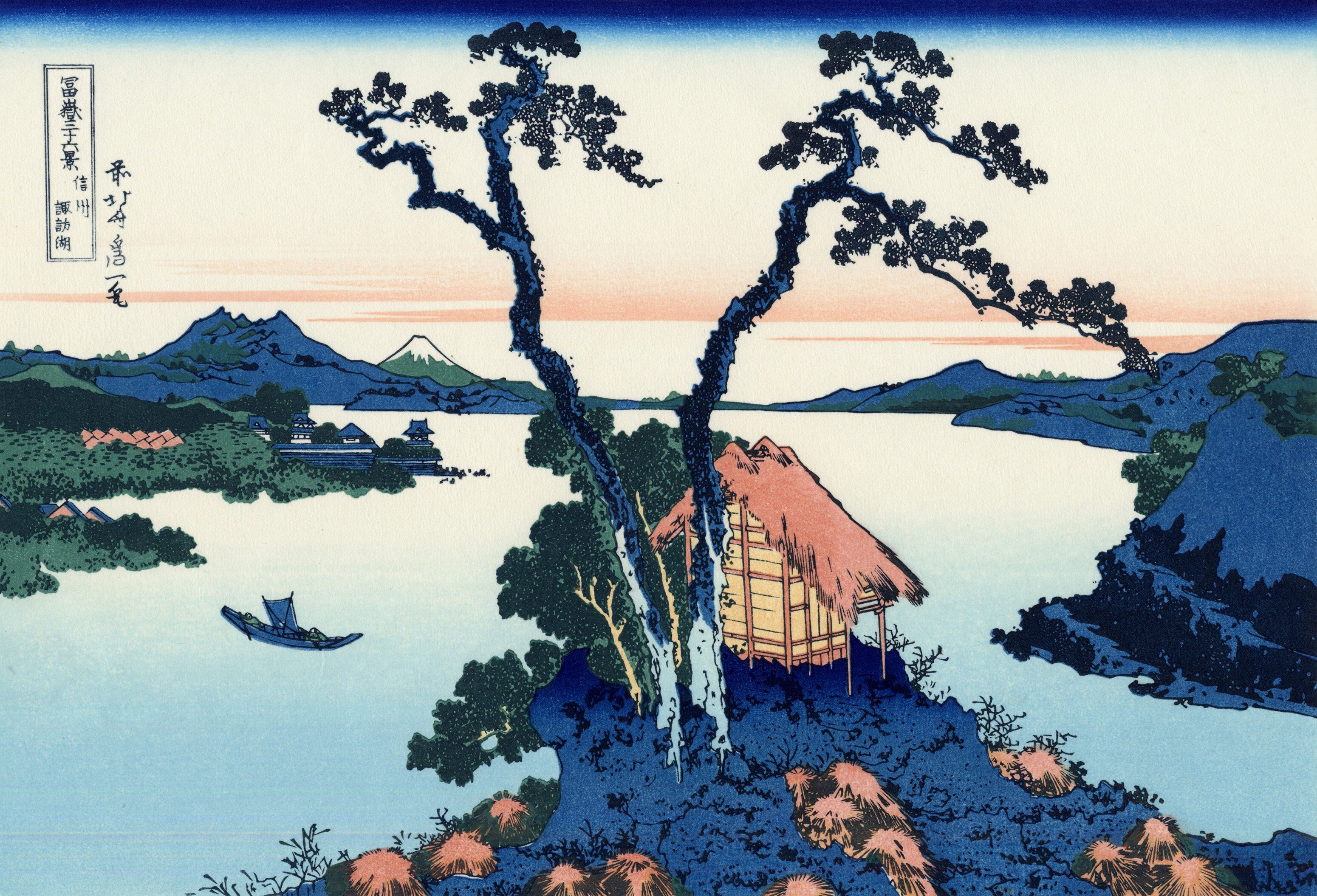
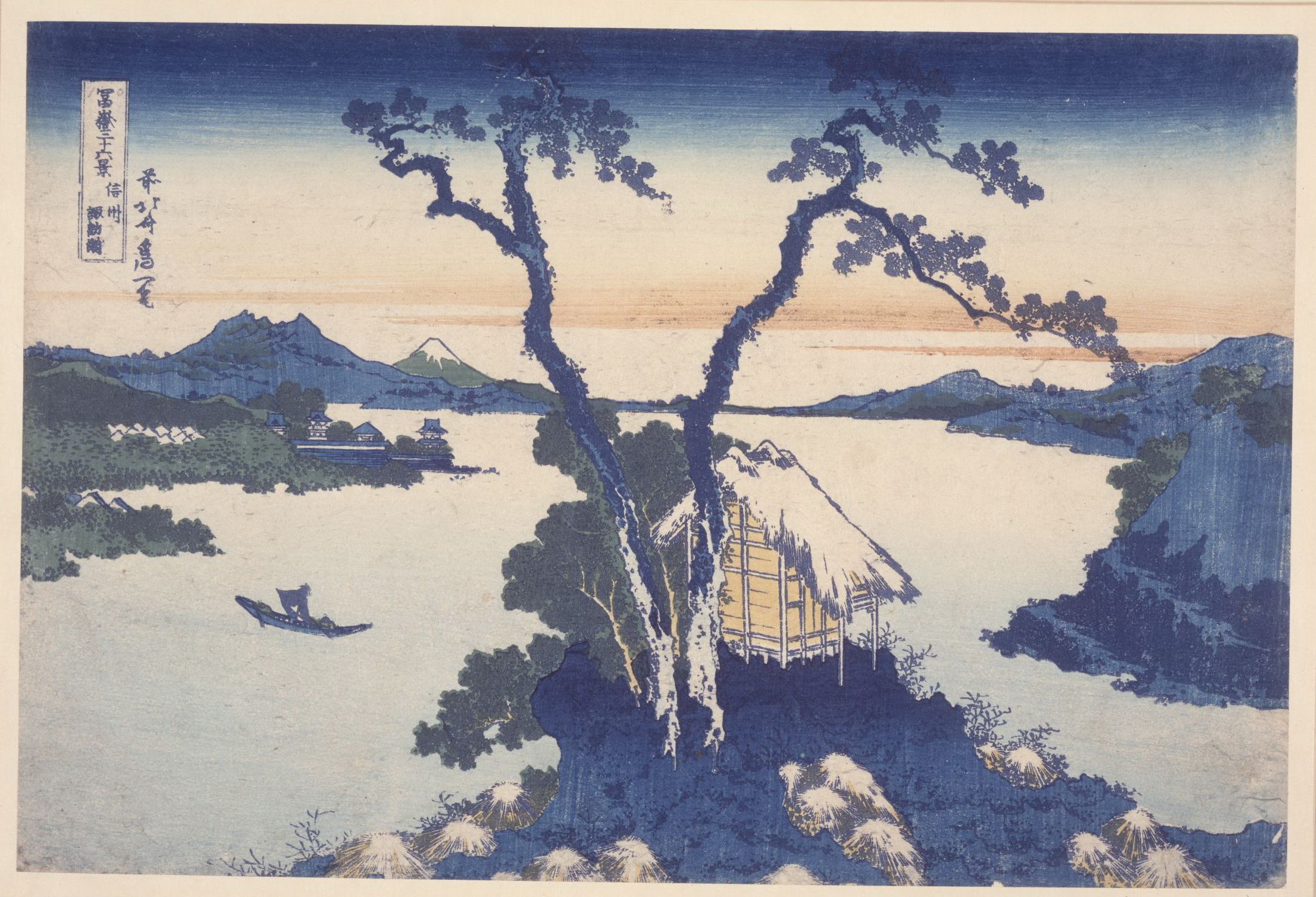
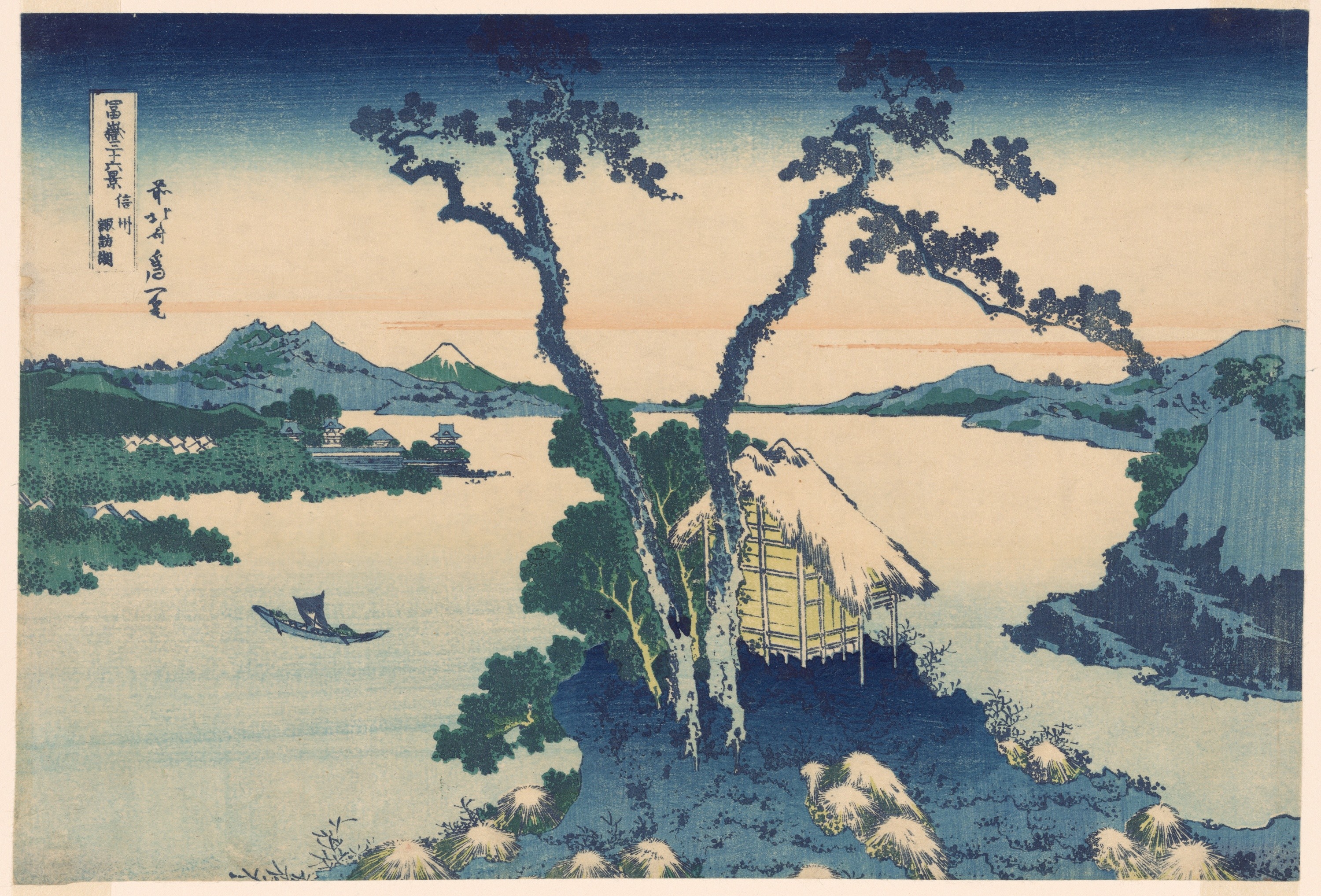
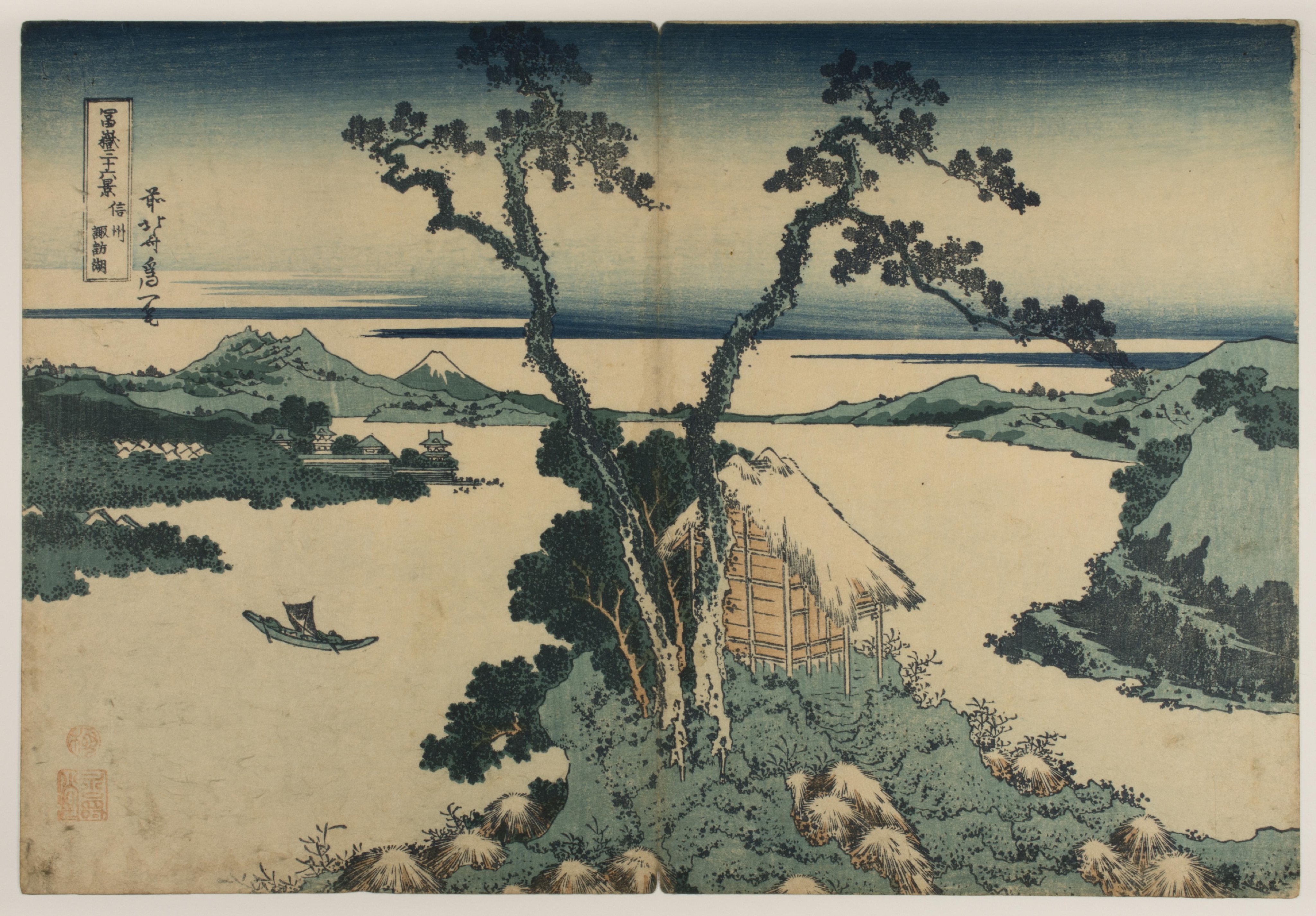
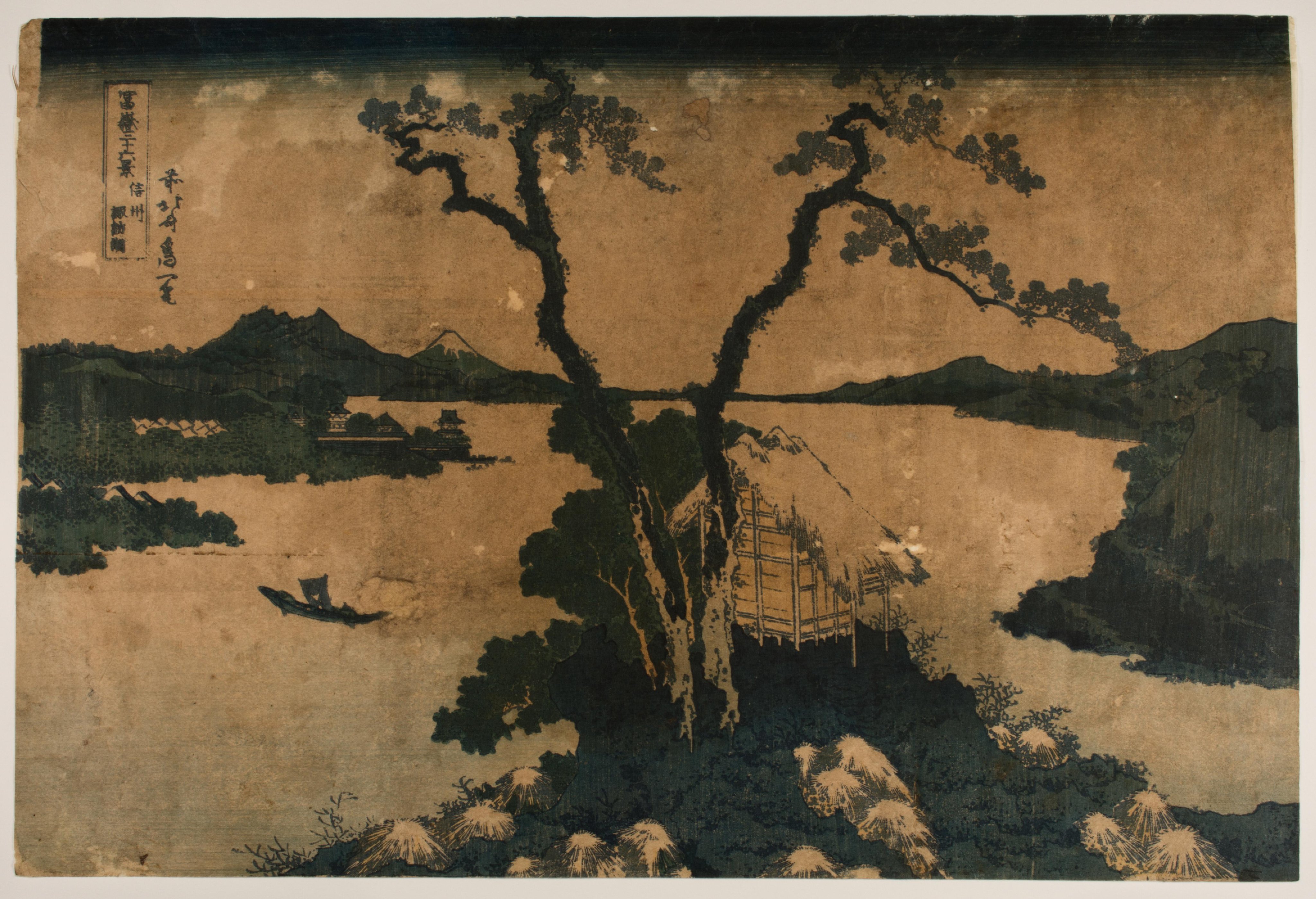
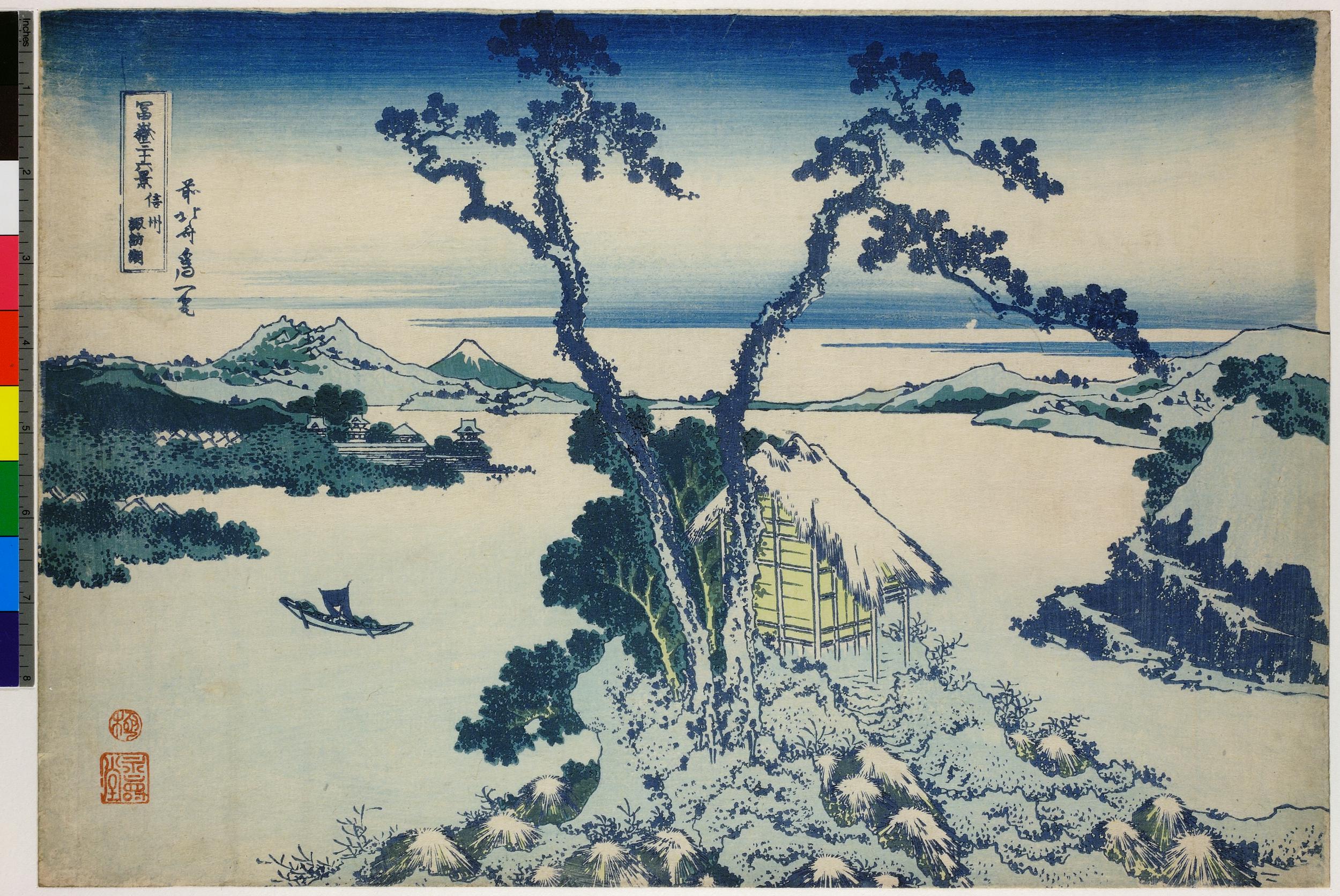
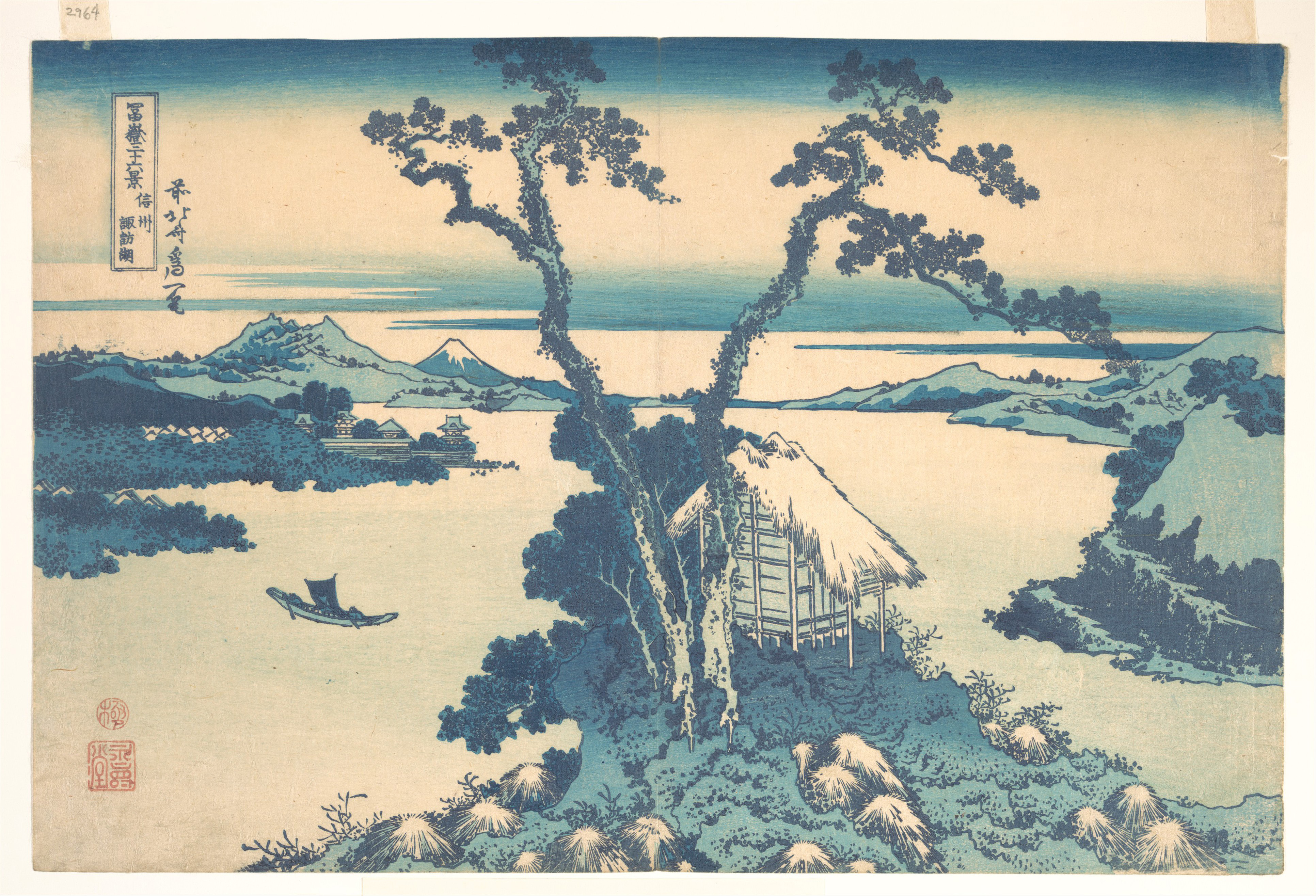
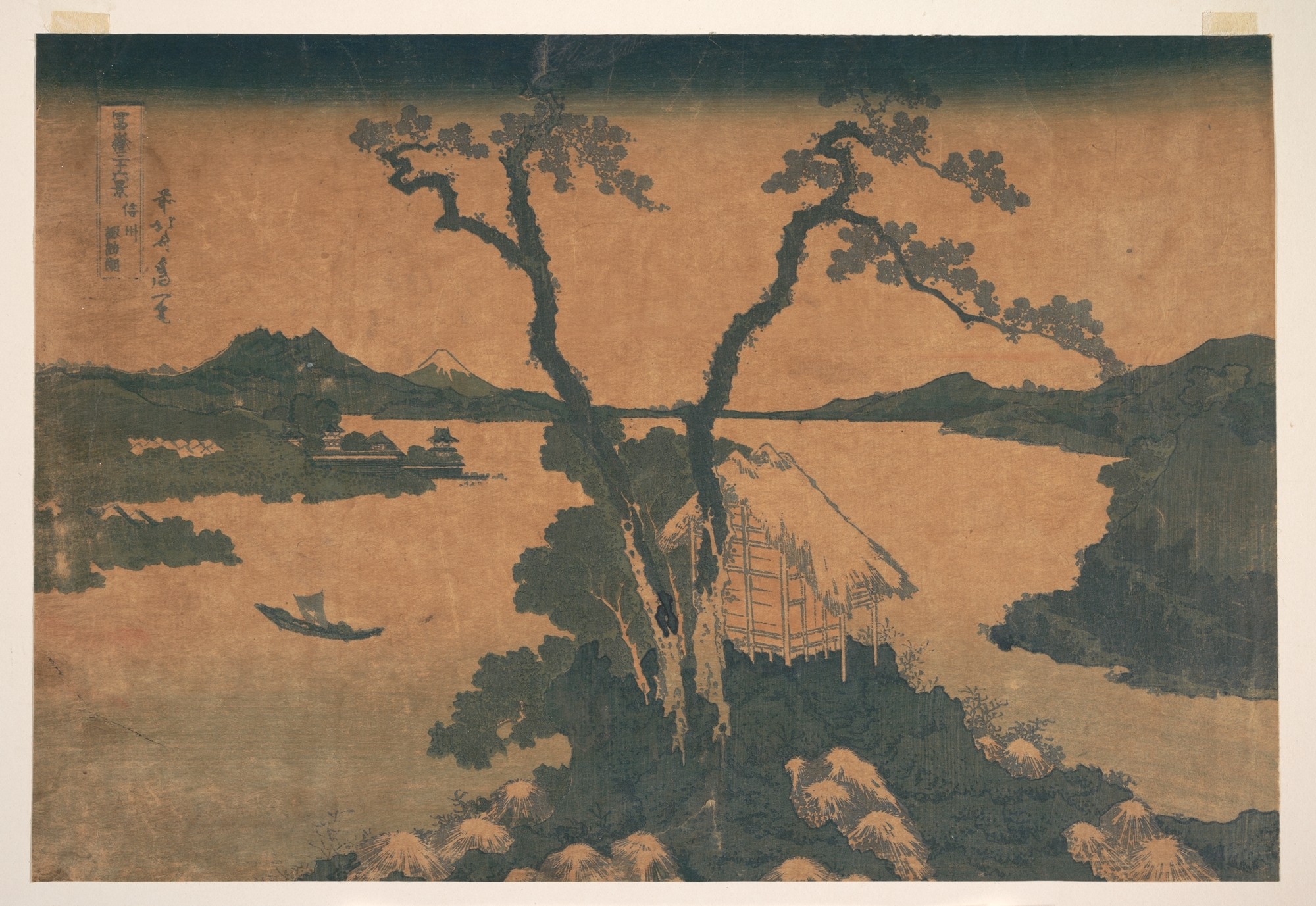

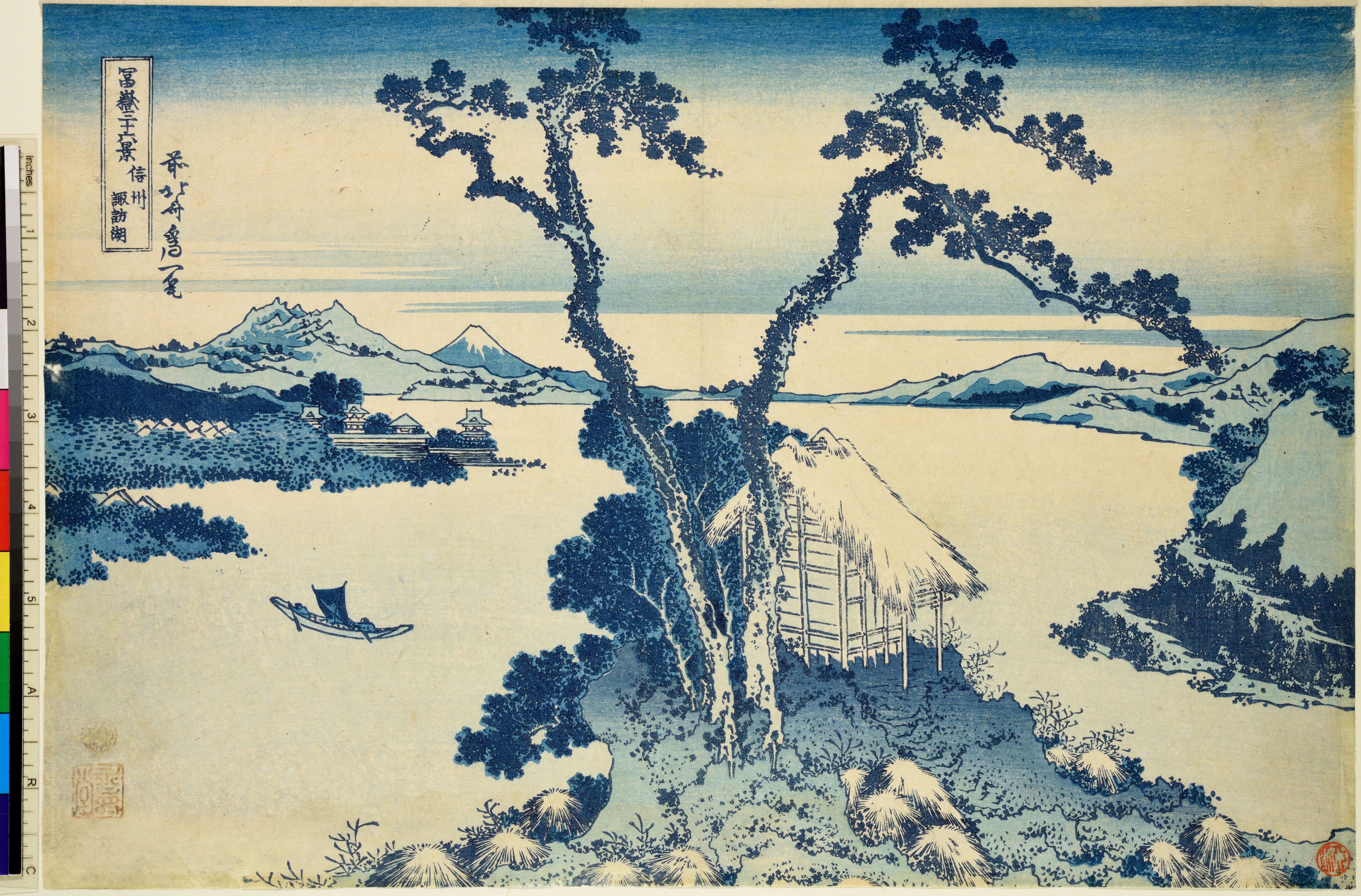
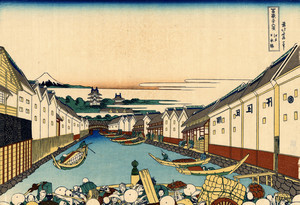
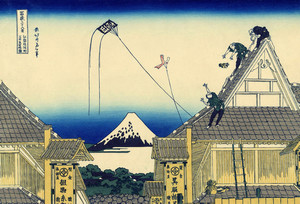
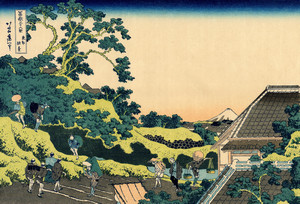
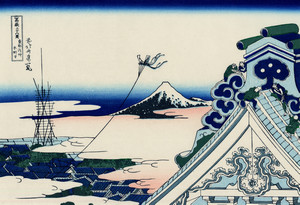
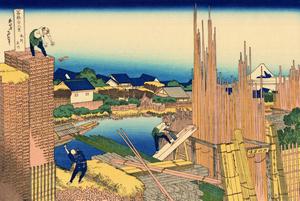
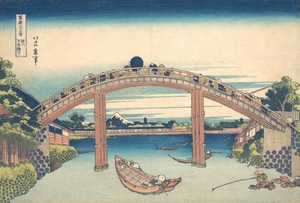
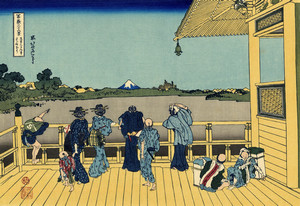
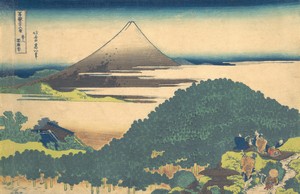
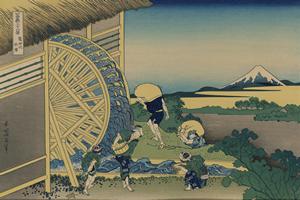
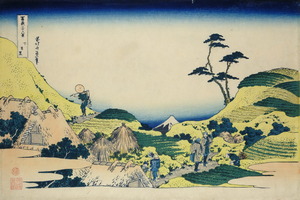
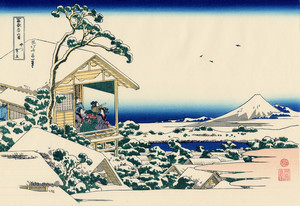
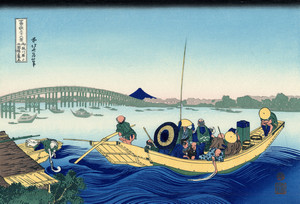
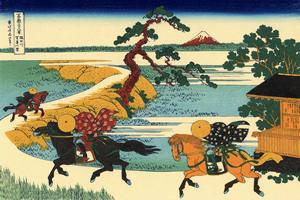
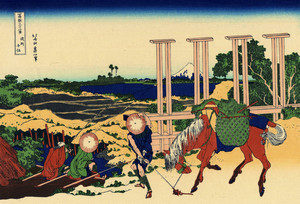
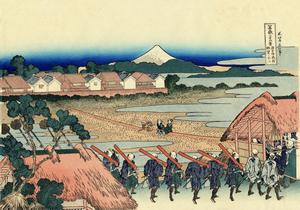
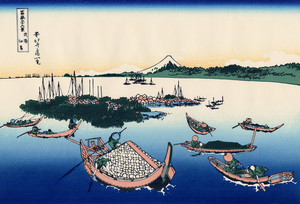
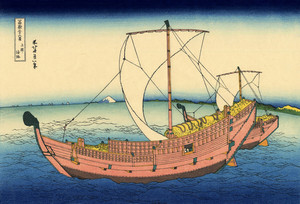
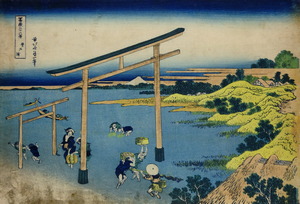
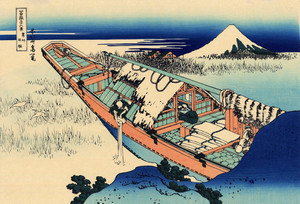
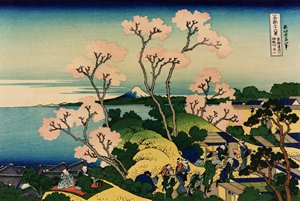
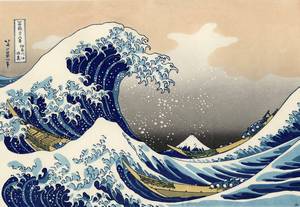
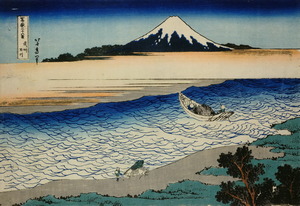
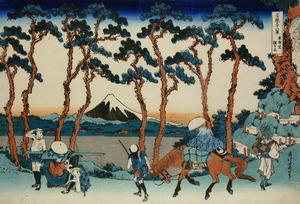
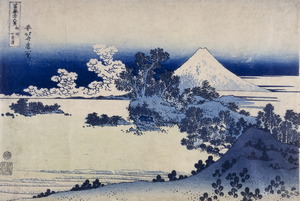
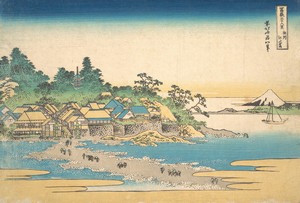
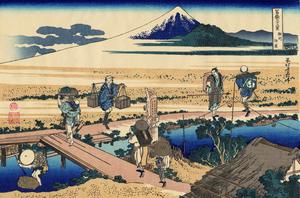
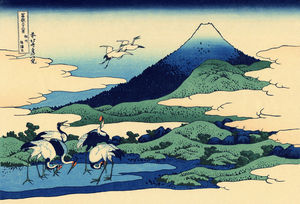
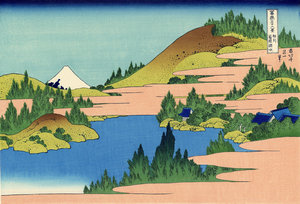
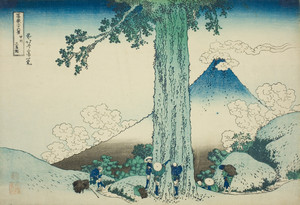
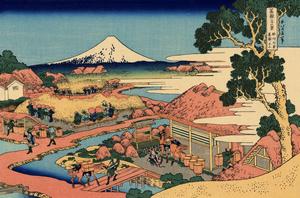
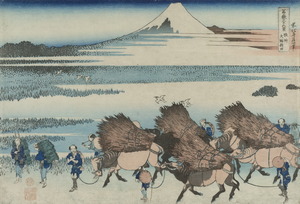
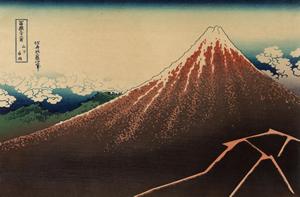
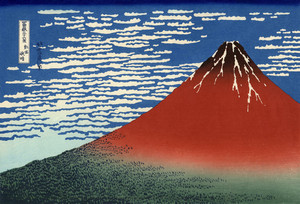
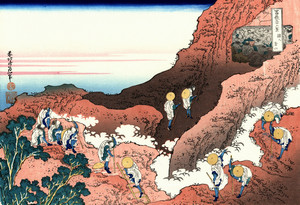
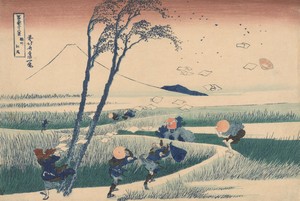
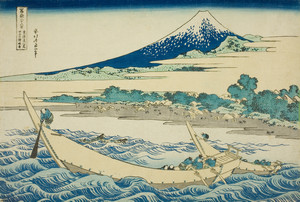
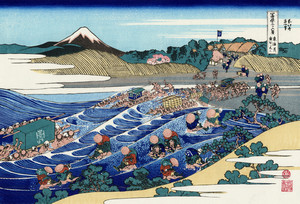
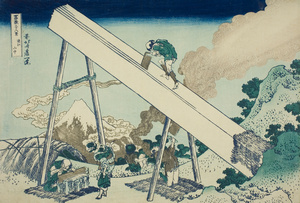
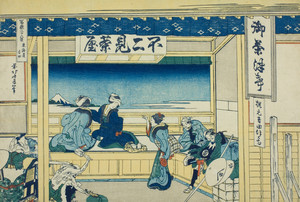
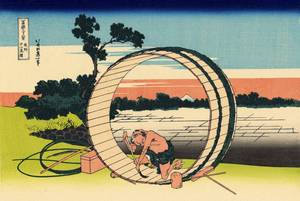
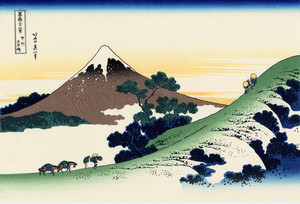
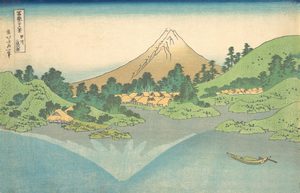
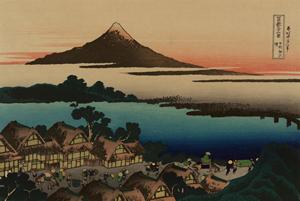
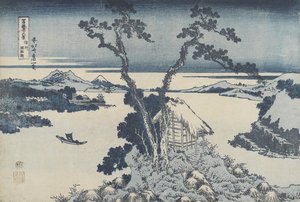
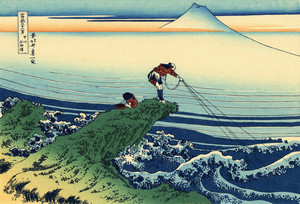
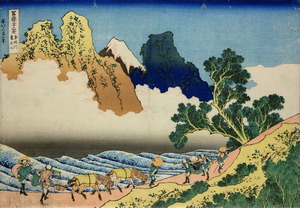





Комментарии
Добавить комментарий